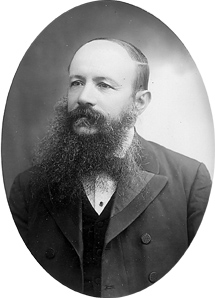Related Research Articles
The Brazilian shrew mouse, also known as the blarinine akodont, is a rodent in the tribe Akodontini from the Atlantic Forest of eastern and southeastern Brazil. It is the only species in the genus Blarinomys. Phylogenetic analysis suggest that there are two clear geographical clades, a northeastern and southeastern.
Paranauchenia is an extinct genus of South American litopterns belonging to the family Macraucheniidae. It is known only from fossil finds in Argentina. It possessed three toes and long limbs. The species Paranauchenia denticulata lived in the Miocene epoch in Argentina. Fossils have been found in the Arroyo Chasicó and Ituzaingó Formations of Argentina.

The huayco tinamou, also known as waypu (Quechua), is a species of bird found on grassy mountain ridges in the Andes of Bolivia and Argentina.
Henricosborniidae is a family of extinct notoungulate mammals known from the Late Paleocene to Middle Eocene of Argentina, Bolivia and Brazil. The name honors U.S. paleontologist Henry Fairfield Osborn.

Mosè Giacomo Bertoni, known in Spanish as Moisés Santiago Bertoni, was an Italian-speaking Swiss naturalist. He emigrated to South America in 1884 and lived in Paraguay from 1887 until he died in 1929.
Latindex is a bibliographical information system available for free consultation. Established as a network in 1997, the project is based on the cooperation of 17 national resource centers that operate in a coordinated scheme for the gathering and dissemination of relevant information and data on the Iberoamerican journals.

Peter Jörgensen was a Danish early 20th century entomologist, active particularly in Argentina and Paraguay.
Antônio Domingos Brescovit is a Brazilian arachnologist. His first name, Antônio may also be spelt António. He develops academic activities at the 'arthropodae laboratorium' at the Butantan Institute, and he is a specialist in Neotropical Arachnida.

Machu Such'i Qhuchi or Machu Such'i Q'uchi is a mountain in the Apolobamba mountain range in the Bolivian Andes, about 5,679 metres (18,632 ft) high. It is situated near the Peruvian border in the La Paz Department, Franz Tamayo Province, Pelechuco Municipality, east of Such'i Lake.

Miguel Triana Ruiz de Cote was a Colombian engineer and Muisca scholar. He is best known for his 1922 publication La Civilización Chibcha; "The Muisca civilisation". Triana wrote a number of books about the Muisca and their culture. Miguel Triana especially contributed to the knowledge of the religion, society and the creation of rock art throughout the Muisca Confederation. Triana was the first Colombian investigator relating the Muisca culture with the pictographs. He described hundreds of rock paintings and carvings in his book El jeroglífico Chibcha.

Eduardo González Calleja is a Spanish historian, professor of Contemporary History at the Charles III University of Madrid (UC3M). He is the author of a long list of scholar works dealing with political violence.
Punatitan is a genus of titanosaurian sauropod dinosaur from the Late Cretaceous Ciénaga del Río Huaco Formation of La Rioja, Argentina. It contains one species, Punatitan coughlini.
Astrapothericulus is an extinct genus of mammals, belonging to the order Astrapotheria. It lived during the Lower Miocene in what is now South America.
Proectocion is an extinct genus of adianthid litoptern. It lived during the Early Eocene, in what is now South America.
Henricosbornia is an extinct genus of henricosborniid notoungulate that lived from the Late Paleocene to the Middle Eocene of what is now Argentina and Brazil.
Eohyrax is an extinct genus of Notoungulate, belonging to the suborder Typotheria. It lived during the Middle Eocene, and its remains were discovered in South America.

Pseudotypotherium is an extinct genus of Notoungulates, belonging to the suborder Typotheria. It lived from the Late Miocene to the Late Pliocene, and its fossilized remains were discovered in South America.
Colpodon is an extinct genus of herbivorous mammal, belonging to the order Notoungulata. It lived during the Early Miocene, in what is today Argentina and Chile, in South America.
Archaeopithecus is an extinct genus of Notoungulate, belonging to the suborder Typotheria. It lived during the Middle Eocene, in what is today Argentina.
Plohophorus is an extinct genus of Glyptodont. it lived from the Late Miocene to the Late Pliocene, and its fossilized remains were discovered in South America.
References
- 1 2 "GlobIZ search". Global Information System on Pyraloidea. Retrieved 2012-02-23.
- ↑ Fauna Europaea
- ↑ Red de Revistas Científicas de América Latina y el Caribe, España y Portugal Sistema de Información Científica Redalyc
- ↑ Brackish Coastal Lakes [ permanent dead link ]